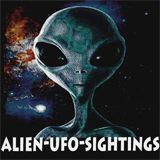UFO Encounters: Sightings, Visitations, and Investigations – CLOSEST ENCOUNTERS
On the evening of September 19, 1961, while driving home to Portsmouth through rural New Flampshire, Barney and Betty Hill sighted a pancake-shaped UFO with a double row of windows. At one point they stopped their car, and Barney got out for a better look. As the UFO tilted in his direction, he saw six uniformed beings inside. Suddenly frightened, the Hills sped away, but soon a series of beeps sounded, their vehicle started to vibrate, and they felt drowsy. The next thing they knew, they were hearing beeps again. The UFO was gone. When they arrived home, it was two hours later than they expected; somehow, the Hills had lost two hours.
A series of disturbing dreams and other problems led the Hills to seek psychiatric help. Between January and June 1964, under hypnosis, they recounted the landing of the UFO, the emergence of its occupants, their abduction into the craft, and separately experienced medical examinations. In 1965 a Boston newspaper reported the story, which in 1967 became the subject of a best-selling book, John G. Fuller’s The Interrupted Journey. On October 20, 1975, NBC television broadcast a docudrama, The UFO Incident, about the experience.
Most everyone has heard of the UFO abduction of the Hills. At the time it shocked even hard-core ufologists. Nothing quite like it had ever been recorded. Ufologists did know of a bizarre December 1954 incident from Venezuela: Four hairy UFO beings allegedly tried to drag a hunter into their craft, only to be discouraged when his companion struck one of them on the head with the butt of his gun. In any case, ufologists traditionally viewed with suspicion claims of on-board encounters with UFO crews. Those kinds of stories were associated with “contactees,” who were regarded, with good reason, as charlatans who peddled long-winded tales of meetings with godlike “Space Brothers.” The Hills, however, had a sterling personal reputation, and they returned from their experience with no messages of cosmic uplift.
Investigators collected more and more accounts of such abductions, usually, though not always, elicited through hypnosis. In most cases witnesses told of seeing a UFO or even humanoid beings, then suffering amnesia for a period of anywhere from a few minutes to a few’ hours. Some witnesses claimed repeated experiences that started when they were children.
The clear implication was that UFO beings (typically described in these instances as little gray humanoids with oversize heads, slanted eyes, two holes for a nose, and a slit for a mouth) had a long-term interest in certain human beings. Some abductees even reported that the abductors had put small implants usually said to be tiny balls inserted through the nose and (apparently) into the brain via a long needle—inside their bodies.
In time new and even more unsettling dimensions to the abduction experience came to light. To test the confabulation hypothesis, folklorist Thomas E. Bullard collected all available abduction accounts. He found that as many as one-third of the informants had full conscious recall of their experiences and had never resorted to hypnosis to elicit the details. These non¬ hypnotic reports proved identical in all significant particulars to those told under hypnosis.
Bullard also learned that the identity of the individual hypnotist made no difference. The stories remained consistent down to details that even those most familiar with the phenomenon had failed to notice. In short, Bullard concluded, whatever its ultimate cause, the abduction phenomenon was not the product of hypnosis. “The skeptical argument needs rebuilding from the ground up,” he wrote.
A growing number of mental-health professionals have conducted their own investigations of the abduction phenomenon. In the early 1980s psychological testing of a small group of abductees in New York indicated that they suffered from post-traumatic stress disorder (PTSD). Dr. Elizabeth Slater, a psychologist with a private practice in New York City, remarked that these findings are “not inconsistent with the possibility that reported UFO abductions have, in fact, occurred.” Other studies since then have come to similar conclusions, and the scientific investigation of the abduction phenomenon continues.
“SPACE BROTHERS,” MCFON, AND CEEOS
Because most scientists have been apathetic to UFO reports and official government agencies have treated them with indifference or wrapped them in secrecy, we owe most of our UFO know ledge to the efforts of private organizations of varying credibility. At one extreme are quasi-religious groups advocating contact with godlike “Space Brothers.” At the other are sober, scientifically grounded efforts that carefully gather and document evidence while keeping speculation to a minimum.
The three most influential groups in the United States have been the Aerial Phenomena Research Organization (now defunct), the Mutual UFO Network (103 Oldtowne Road, Seguin, Texas 78155), and the Center for UFO Studies (2457 W. Peterson Avenue, Chicago, Illinois 60659). MUFON and CUFOS both publish magazines (MUFON UFO Journal and International UFO Reporter) that cover a wide range of UFO matters. Some female abductees reported sexual experiences followed by pregnancies that would be terminated in a follow-up abduction some months later. During later abductions the UFO entities would show the women strange-looking children, apparently human/alien hybrids, whom they would sense were their own.
Not surprisingly, such reports gave rise to furious controversy. Even many UFOlogists rejected them, preferring, in common with UFO skep tics, to believe “abductions” were fantasies generated by the process of hypnosis itself. Contrary to popular understanding, hypnosis is no royal road to the truth. Hypnotic subjects are in a highly suggestible state and may seek to please the hypnotist. Thus, if the hypnotist asks leading questions, the subject will be led to provide the desired answers. Moreover, purely imaginary events can seem real under hypnosis (confabulation), as testified to in the phenomenon of “past lives” recounted while in a hypnotic state.
